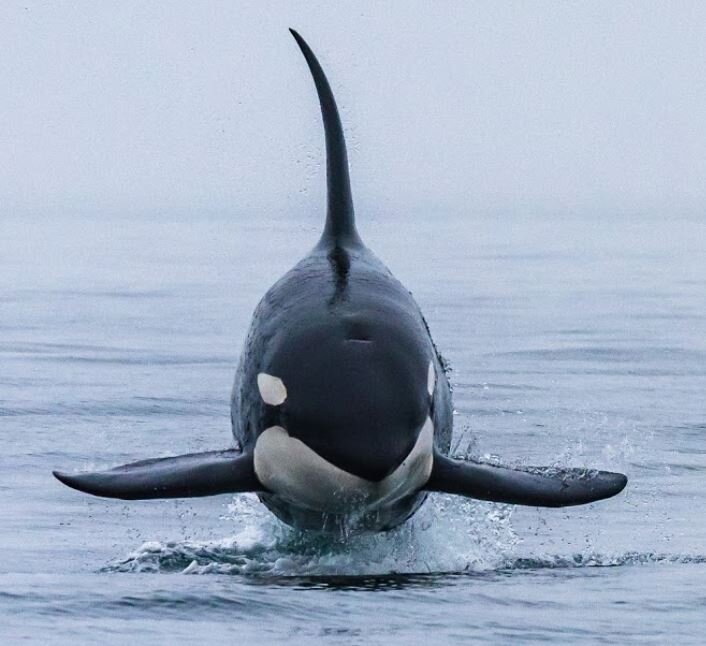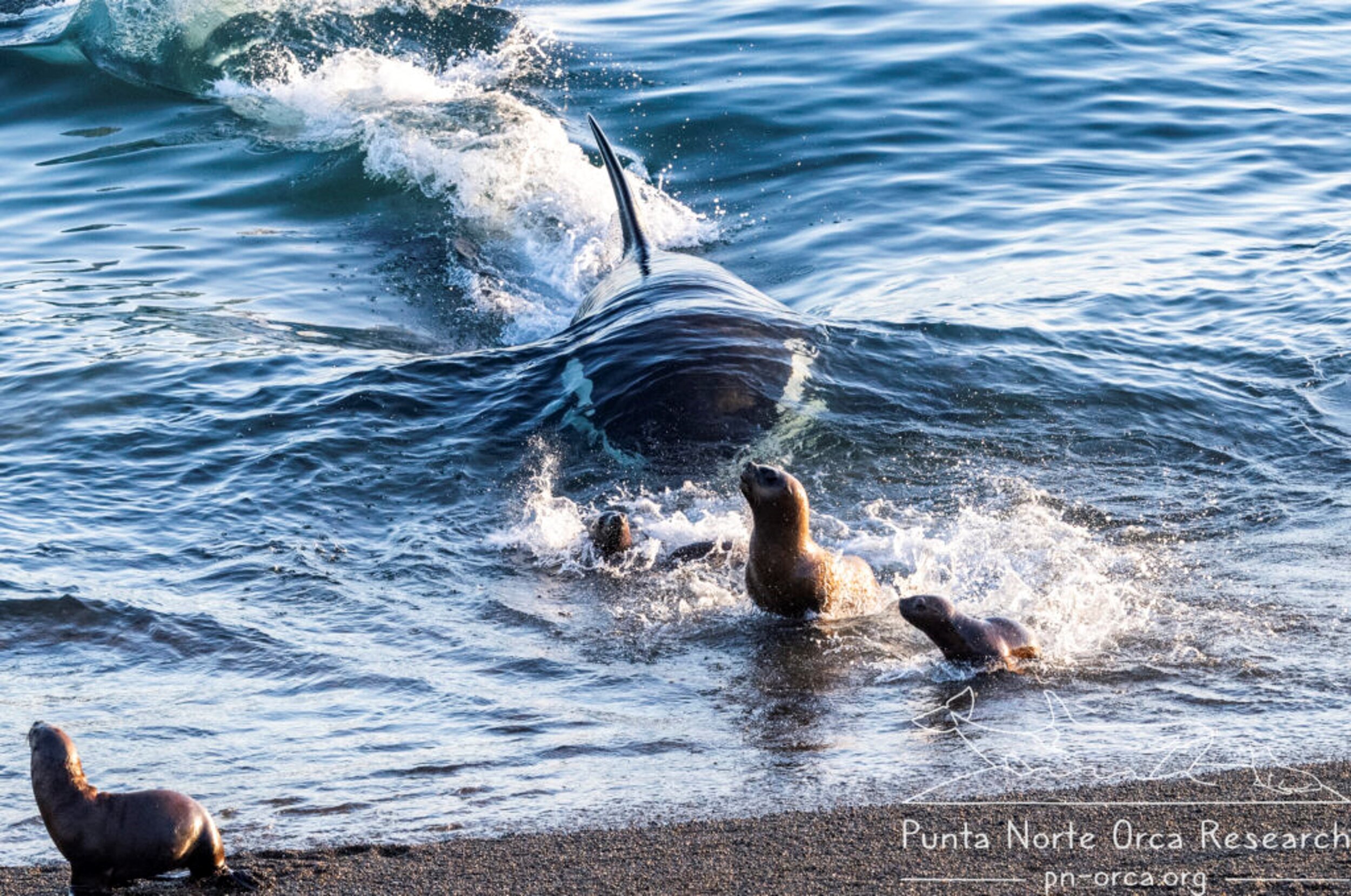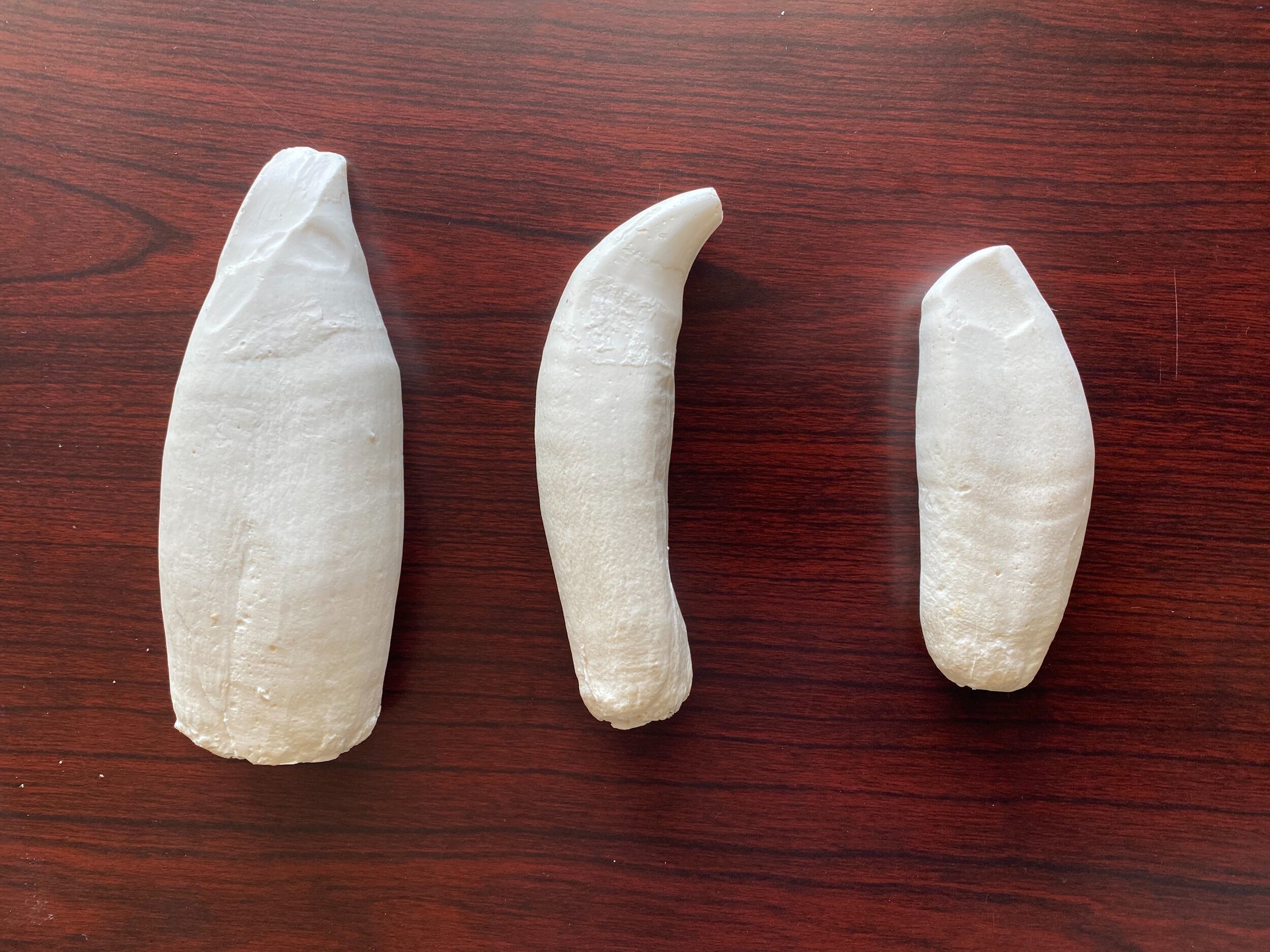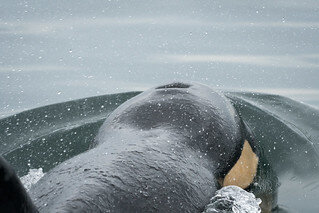Friend Feature: Killer Whales
Transient orca making a splash in the Salish Sea. Photo by Ken Rea, Salish Sea In Focus
They go by many names, qal̕qaləx̌ič (Lushootseed language), KELȽOLEMEĆEN (Sencoten language), killer whales, orca, Orcinus orca (of the kingdom of the dead), blackfish, and even ballena asesina (Spanish). Many of these names honor their cunning and efficient hunting skill but no two ecotypes hunt the same prey.
Ecotypes - they’re not all black and white
What’s an ecotype? There are killer whales all over the world. They live in family groups, called pods with a mother, grandmother, or great-grandmother in charge. Groups of interrelated pods in a given geographical area that share the same prey, language, and social structure are called ecotypes. These are like human tribes or cultures but they don’t intermingle with other ecotypes. Over hundreds of thousands of years orca ecotypes have become quite different from one another in appearance and behaviors.
Ten of possibly more than 22 different ecotypes of killer whales in the world. Poster by Uko Gorter & Robert Pitman (SWSFC NOAA)
For example, in Antarctica the Type A killer whales are large, black and white, and hunt mainly minke whales in open water. In the same area the large and small forms of Type B killer whales hunt seals amongst and on ice bergs. They are gray and white with a gray “cape” and huge, white eye patch. They often look green due to a layer of microscopic algae (diatoms) that coats their skin. The large type B’s knock seals off of the pack ice with a wave they generate through synchronized swimming. The small B’s (b’s?) hunt penguins. Even smaller is the Type C killer whale. It is also gray and white with a gray cape and hunts the huge Antarctic tooth fish. Type D’s are different still. They have a blunt rostrum (nose), pointy fins, and a tiny eye-patch. Much about them remains a mystery - orca research opportunity, anyone?
A mammal-eating orca at Punta Norte, Peninsula Valdez, Patagonia beaches itself skillfully to hunt sea lion pups. Photo by Punta Norte Orca Research
Killer whales in Punta Norte, Argentina teach their young the dangerous trick of beaching themselves to grab seal pups from the steep beach. Orcas in New Zealand catch sting rays, quickly flip them over to put them to “sleep” and avoid getting stabbed by a poisonous spine. Orcas in Norway cooperatively herd herring into tight balls then one whacks the ball of fish with its tail and all swoop in to gobble up the maimed and stunned.
The Salish Sea Three
Here in the Salish Sea, the variety is no less awesome. Three orca ecotypes live here side by side, but don’t mix, at least not in the last 150,000 years or so. For the keen nature detective, there are detectable differences in fins, size, and teeth. Who are the Salish Sea three?
Here are three females to compare and practice identifying Pacific Northwest ecotypes by fin shape (Dahlheim et al. 2008)
Transient killer whale female breaching. Notice the scars on her pointy dorsal fin, possibly from marine mammal prey defending themselves. Photo by Ken Rea, Salish Sea In Focus.
Biggs’ Biggs’ killer whales are named for the amazing researcher who first documented a total count of whales through photo-identification and started the naming system by a pod letter and birth order number. They were previously called transients. These are marine mammal eaters. They hunt seals, sea lions, porpoises, white-sided dolphins, and whales. Their prey is highly intelligent so these whales live in small pods and go into stealth mode on the hunt. The ideal pod size for sneakiness is three to four whales, led by their mom. Usually, if a fourth whale is born, one of the others leaves the pod, but not the first-born son. He’s a mama’s boy for life.
Each of these teeth belonged to an orca in a different ecotype in the Pacific Northwest. Can you tell which held onto slippery salmon, which chomped into large marine mammals, and which cut through sand-papery shark skins?
Offshores Offshore orcas are shark eaters! Like the New Zealand orcas that eat sting rays, offshore orcas have learned the trick of putting sharks, mainly large, sleeper sharks, to sleep (a state called tonic immobility) by flipping them upside down. Getting close enough to do that while avoiding the pointy end can be tricky. A mixture of ramming, tail-whacking, and teamwork get the job done. Can you imagine biting into sharks every day? Sharks have rough scales, called denticles, which are kind of like sandpaper.
Residents We may be most familiar with the resident killer whales, the salmon-eaters. Northern residents live mostly in British Columbian waterways, have a custom of rubbing their bodies on gravel in shallow water, and, just like southern residents, eat mostly salmon, preferably big, fat Chinook, the king of salmon.
Southern residents travel mainly in Washington waters, but follow salmon runs all the way to northern California.
Due mainly to mistakes non-indigenous peoples have made over the past couple of hundred years, Southern Resident orcas are currently endangered and Northern Residents are threatened. Some short-sighted thinking in natural resource harvesting, processing, and shipping resulted in:
much smaller salmon runs
boat noise interfering with echolocation
pollution
So, both resident populations are hungry, increasing their call volume, and sometimes, getting sick from toxins, especially the babies.
Luckily, Salish Sea Heroes are hard at work for the whales! The Lummi Nation held a ceremony for a starving, three-year-old, little whale named Scarlet (J50) and delivered live, Chinook salmon right to her. Two sharp-shooting wildlife veterinarians, Vancouver Aquarium’s Martin Haulena and SeaDoc Science Director, Joe Gaydos, gave her shots of medicine to get rid of infection and the parasites (worms) in her gut. Not an easy task shooting a moving whale from a rocking boat! Good thing he is a sharp-shooter! They were too late to save Scarlet, but hope is on the horizon.
SeaDoc Society Wildlife Veterinarian, Joe Gaydos, shoots a medicine-filled dart into Scarlet (J50) trying to save her life. Photo by Bob Friel, Team SeaDoc
Scarlet (J50), a J-pod calf showing “peanut head,” a sign of severe weight loss.
Gender Reveal
Just today Canada’s Department of Fisheries and Oceans scientists announced that L125, the Southern Resident, L-Pod calf born in February 2020 is a (drum roll……..) girl!!! This means there is one more whale capable of having babies to grow the population to a healthy size if she can grow up strong and healthy herself.
One of the two 2020 Southern Resident calves, J58, born last September is also a girl. That’s two for three of the new cousins of the south side(J57 is a boy). Of course, every new killer whale calf is cause for celebration for us and our precious neighbors in the sea.
You don’t have to be a wildlife vet to be heroes for these whales. Protecting Chinook salmon and salmon streams, shutting off boat engines when orcas are near, and cleaning up beaches and using wildlife-friendly chemicals for cleaning, car, and yard care, all help, making you a Salish Sea Hero, too!
And that’s something to breach about.
Southern Resident Killer Whales jumping for joy in the Salish Sea. Photo by Jon Cornforth, Salish Sea In Focus













